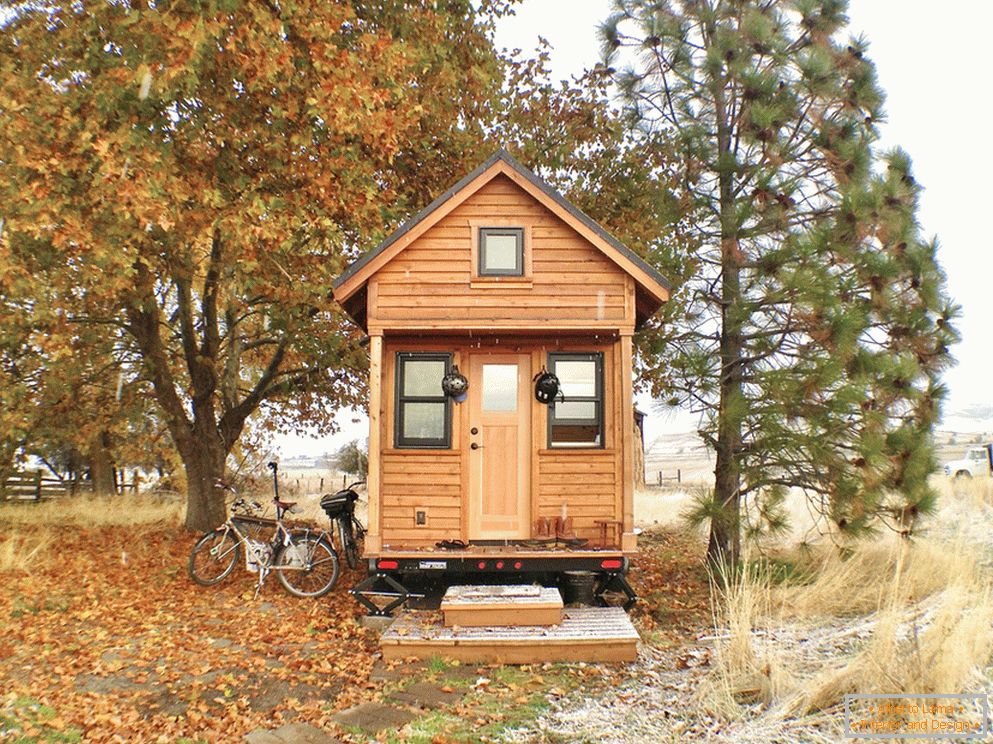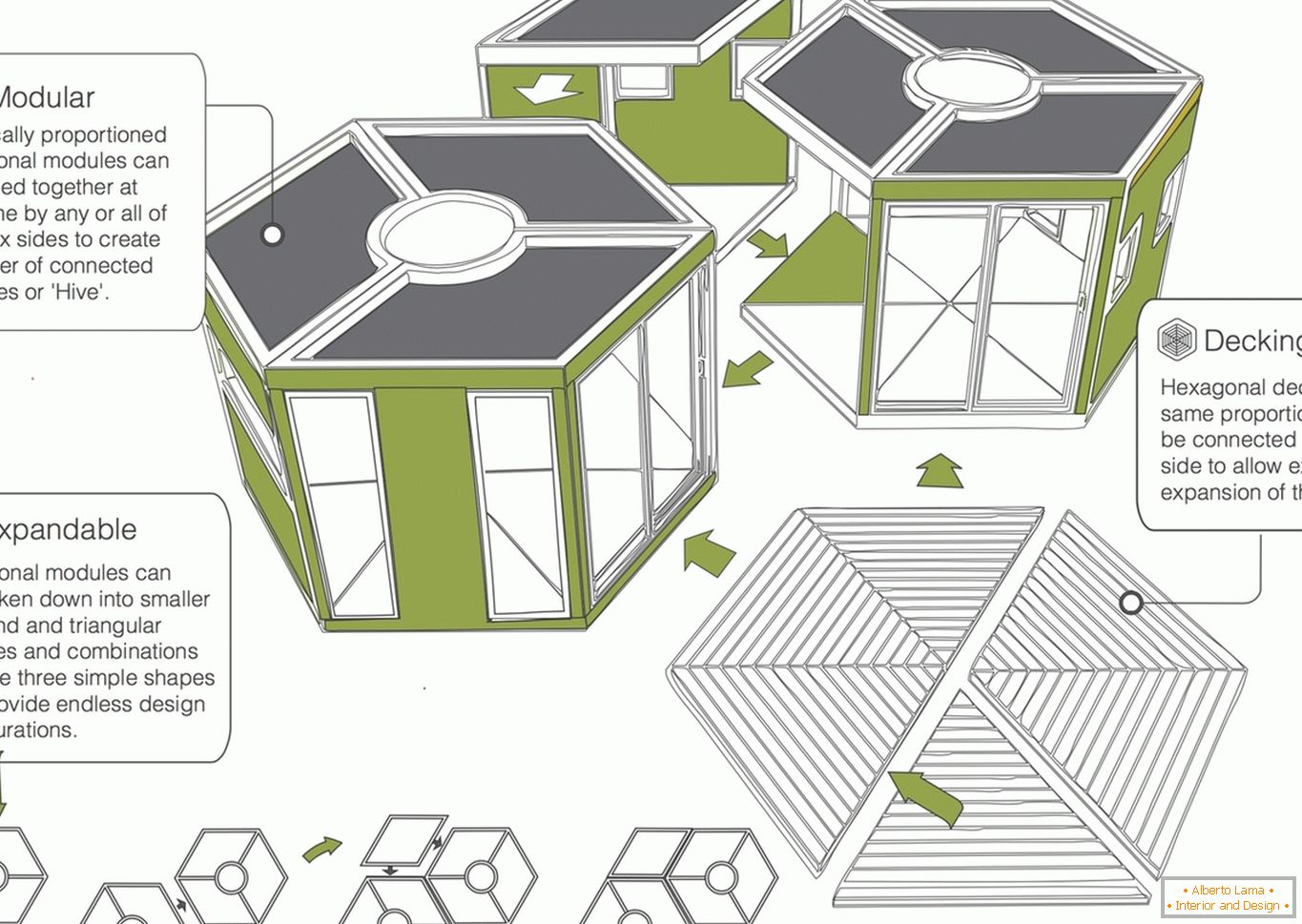
Small houses will always be in demand
There is every reason to believe that small houses today are much more than just objects of architecting experiments. We do not mean specific constructions, but the trend as a whole. The tendency to increase the interest of society in the construction of compact houses.
Awareness of this fact gives rise to a number of questions: why suddenly small houses have become so important for modern people? what benefit can they bring to society? and do small houses have such shortcomings that can not be resisted?
Whoever tries to answer these questions, he inevitably comes to the conclusion that the construction of compact buildings is by far the most probable solution to the housing problem.

Quixote Village in Olympia, Washington
The construction of small houses helps to solve the tasks of the global economy at, so to speak, the grassroots level. Entire regions of the Western world have come face to face with the critical situation, which is that owning a full-fledged home has become too expensive and therefore an increasingly rare pleasure.
The popularity of compact buildings gained momentum amidst the fact that so many people continue to abandon the idea of living in spacious interiors in favor of the opportunity to guarantee themselves stability and confidence in the future.
The lack of the need to take a mortgage to buy a home and significant savings on its maintenance and utility payments is what attracts potential buyers of small-sized real estate in the first place.
There is nothing surprising in the fact that the construction of small houses began to blossom in the post-war period, and since the current situation in the world economy is much the same as what happened in the late 1940s (according to some analysts), we should take a few lessons from the architecture of those years.
Thus, the dismountable houses of Jean Prueve were the answer to the need of the population of the destroyed French cities in cheap and prefabricated housing.
Walter Seagal developed his own simple method of constructing houses, which even people could build without appropriate experience. But the most striking examples of this approach are American homes, which were sent to customers in the mail in disassembled form.

The interior of one of the collapsible houses, designed by Jean Pruve
So, what conclusions can we draw on the construction of small houses, based on the experience of post-war architects?

The concept of creating modular houses HiveHaus
1. It is necessary to systematize
Small-sized residential buildings should no longer be created by trial and error. It is necessary to develop a simple scheme that leaves room for imagination. Looking for detailed instructions, based on existing good examples.

The WikiHouse project. A frame from video instructions for building a house
2. Individual needs must be taken into account
Do not identify the systematization with total standardization. One of the main claims to post-war architecture was that the hastily built houses were faceless. It is important to ensure the possibility of adding unique parts to the universal project.
3. Houses must be carefully planned and built on conscience.
It is possible and even likely that the crisis will ever end. It is extremely important that the houses built today are not unsuitable for living in a more favorable economic situation (as happened, for example, with multi-apartment buildings of the Khrushchev era).

A two-level house built as part of the WikiHouse project for last year's Design Festival in London
4. Without amendments to the building and housing codes is indispensable
Even if we exclude the possibility of financing the type of housing construction that we are considering by the state, the question of some legislative norms remains open. It is necessary that the requirements for the area and the construction of houses erected for permanent residence should be changed.

Demonstration sample of the house on the project of the Finnish student Marco Laukkarinen. According to the author's intention, the structure can be erected on a small free site within the existing building
5. It's time to consider the possibility of sealing construction
Of course, we are not talking about the return to the practice of creating communal apartments and barracks houses (with which we did not say goodbye to this day). You just need to develop methods for building private cottages in compact areas. And also learn to ensure confidentiality to their inhabitants, despite the proximity of neighbors.

Plan from the presentation of the project of one more future Finnish architect Olli Ann. Demonstration of the possibility of building houses within the existing residential settlements

Facade (architectural sketch) from the same presentation
So far, supporters of small houses have not been able to achieve all these requirements, but positive dynamics are evident. The society demonstrates readiness for change, and it's worth a lot!

Interior of the demo house from Ollie Enne. The author draws our attention to the slatted roof between the levels through which daylight penetrates into the room
Do you support the idea of building small houses in priority? Share your opinion with us!



